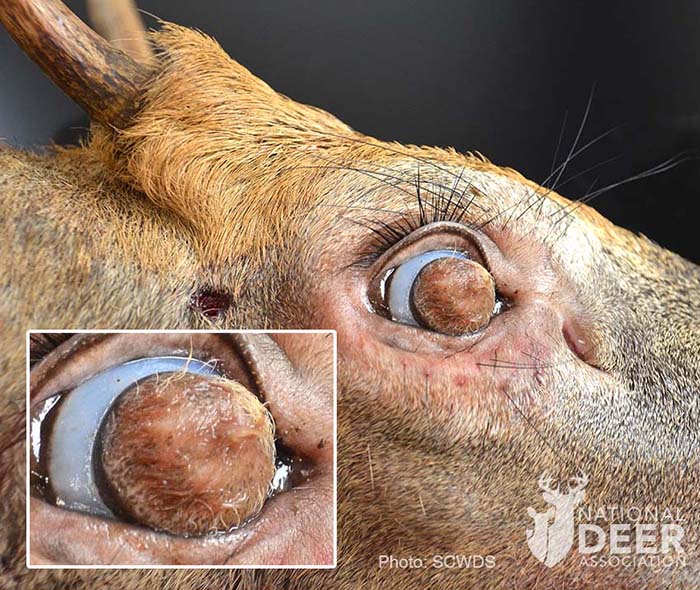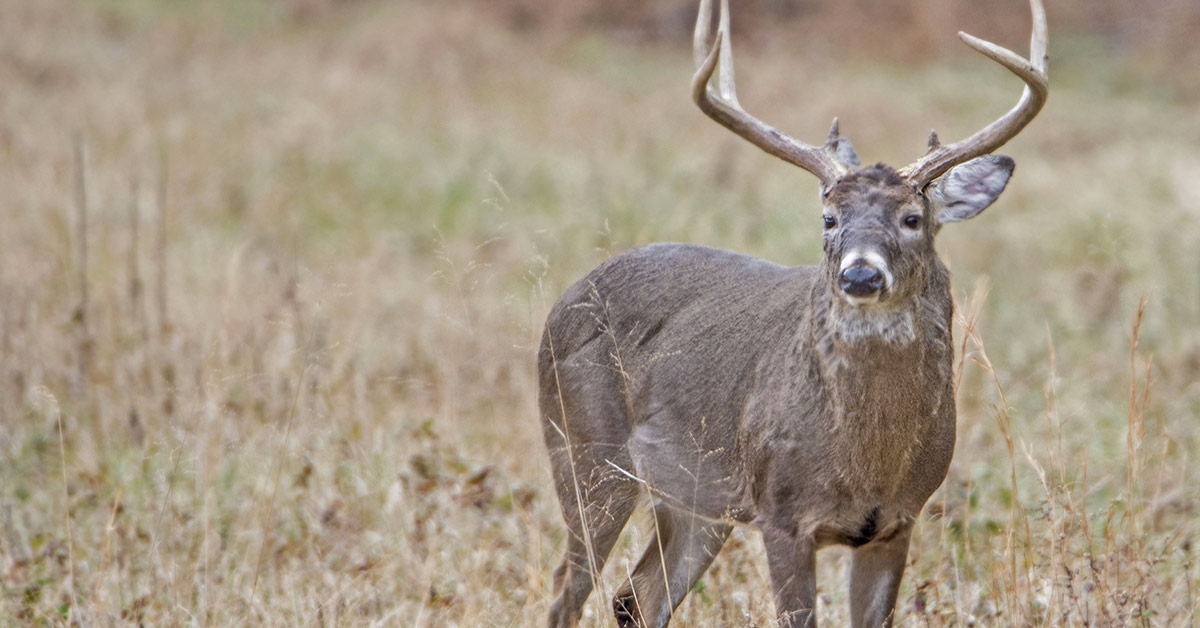In August 2020, locals reported a strange deer stumbling through the streets of Farragut, Tennessee. It appeared disoriented and unaware of the people close by. Upon closer inspection, people realized that it had hair growing from its eyeball. Locals reported it to the Tennessee Wildlife Resources Agency (TWRA), who studied the now deceased animal to find out just what was wrong with it. (1)
Deer Found With Hair Growing From Its Eyeball
When discovered, the deer was circling, bleeding, and didn’t seem to care how close it was to humans. The poor young buck, just over a year old, was completely disoriented. When local police and animal control officers arrived, they realized the animal was in pain and dying. (1)
They put the poor thing out of its misery, but kept its head for analysis by Sterling Daniels, a wildlife biologist at the TWRA. (1)
Daniels filled out a report on the state of the animal, noting that there was not just hair growing from its eyeball but a piece of skin covering the center of its eye. He sent the head to the Southeastern Cooperative Wildlife Disease Study unit (SCWDS) of the University of Georgia vet school for further testing. (1)
Read: How creating wildlife crossings can help reindeer, bears – and even crabs
Why The Buck Had Hair Growing From Its Eyeball
The deer had what’s called “corneal dermoids.” This is when a patch of skin, complete with hair follicles and hair, covers the cornea of the eye. (1)
“Dermoids are a type of choristoma, which is defined as normal tissue in an abnormal location,” wrote Dr. Nicole Nemeth and research technician Michelle Willis in a report for the SCWDS. “Corneal dermoids, as in the case of this deer, often contain elements of normal skin, including hair follicles, sweat glands, collagen, and fat. The masses generally are benign (noninvasive) and are congenital, likely resulting from an embryonal developmental defect.” (1)

Dr. Nemeth says that likely, the deer was born with them and managed to survive for 1.5 years or so without being able to see properly. He says they probably developed slowly over time, so the deer was able to adapt to its ever-lessening vision. By the end, however, it was unlikely the buck could see anything at all. (1)
“It maybe could tell day from dark, but I wouldn’t think it would be able to see where it was going,” he said. “I’d compare it to covering your eyes with a washcloth. You could tell day from night, but that’s about it.” (1)
Not Just Corneal Dermoids
Skin and hair growing from its eyeball wasn’t this unfortunate deer’s only problem. The yearling also tested positive for epizootic hemorrhagic disease (EHD). It primarily affects White-Tailed Deer and is usually fatal. (2)
Caused by two separate viruses, symptoms usually set in within seven days of contracting EHD. The diseased deer may experience (2):
- Reduced appetite
- Weakness
- Loss of fear of humans
- Edema (swelling)
- Fever
The disease comes from tiny midges that bite the deer and will usually kill the animal between eight and 36 hours after symptoms appear. Currently, there is no cure or prevention plan in place. (2)
Can Corneal Dermoids Occur in Other Species
Corneal dermoids can occur and are observed in dogs and cows. It is actually quite rare to see it in deer. Beyond causing vision problems, they don’t cause any other health problems. (1)
Humans can have corneal dermoids, however, it is quite rare. Surgeons can remove them but it won’t vastly improve that person’s vision. (3)
Keep Reading: Man killed by his own rooster during cockfight
Sources
- “Freak Buck Had Corneal Dermoids. Yes, Hairy Eyeballs.” Deer Association. Lindsay Thomas Jr. February 17, 2021.
- “Epizootic Hemorrhagic Disease.” CWHL
- “Surgical treatment of large corneal dermoid.” Pub Med. S Golubovic , Z Latkovic, M Horvatic-Obradovic. 1995.

